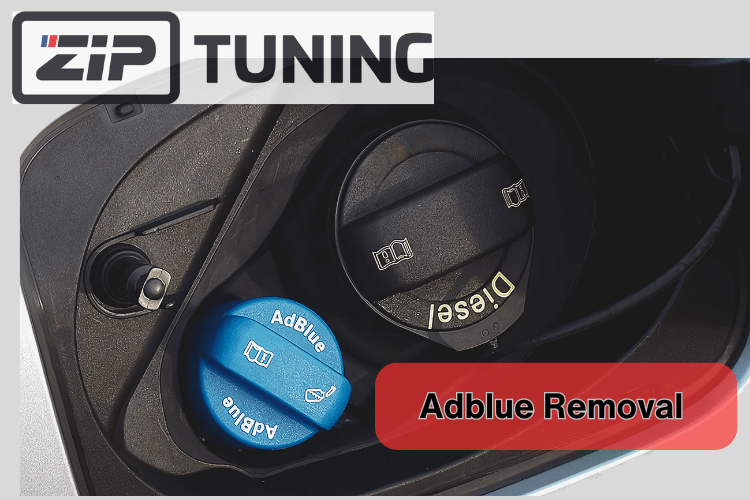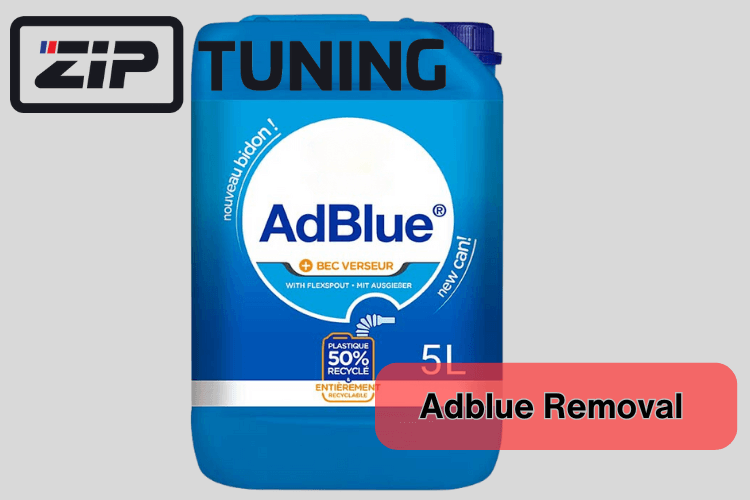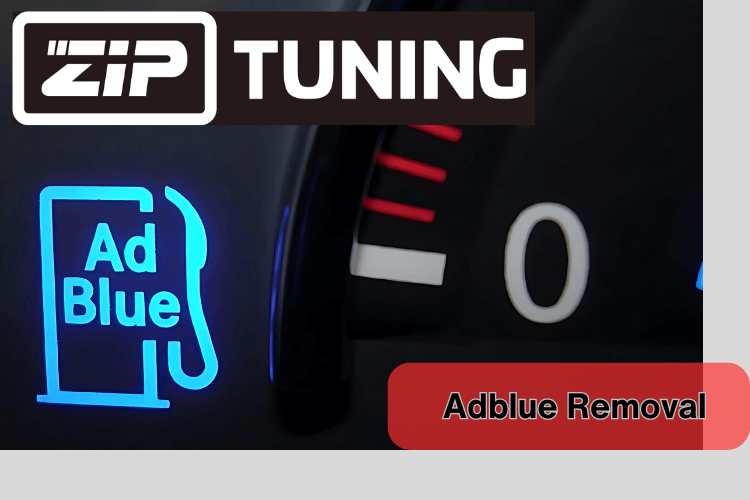Adblue Delete
AdBlue Removal Files: Technical Process and Implementation
As a professional provider of ECU tuning files, we offer specialized services for AdBlue / SCR system modification. This technical overview is intended for automotive engineers, mechanics, and experts familiar with engine calibration and emission control systems.

AdBlue System Modification Process
The process of AdBlue system modification involves several critical steps:
Diagnostic Assessment
- Perform full system diagnostics using OEM-level tools
- Evaluate AdBlue system functionality
- Check and record active error codes
- Assess status of critical components (NOx sensors, tanks, and injectors)
- Verify AdBlue counter status and reset capability
- Reset AdBlue counter status and fill the AdBlue tank
ECU Data Extraction
- Read out ECU data from engine control module
- Extract data from aftertreatment module (DCU) if applicable
- Ensure complete data capture for both modules
- Perform full readout of software for reliable AdBlue function removal (usually in boot or bench)
- Use bench or boot mode for more reliable tuning tool operation (checksum calculation over all maps is guaranteed)

File Upload and Analysis
- First time Customer should Register on website and purchase credits before upload
- Customer uploads extracted files to our secure portal
- Provide detailed system status report including:
- AdBlue system functionality
- Counter reset status
- Component failures (e.g., NOx sensor, tank integrity)
- Active error codes
File Modification
- Our engineers analyze the uploaded data
- Implement custom modifications based on vehicle-specific requirements
- Modify specific maps and parameters to bypass AdBlue system
File Delivery
- Modified file is uploaded to customer portal
- Typical turnaround time: <30 minutes for standard adblue off
- Complex cases (or combination files) processed within 1 hour maximum
Implementation and Testing
- Customer flashes modified file to ECU
- Unplugs the connecters on request of the engineer (SCR unit, plug on tank, SCR fuse, NOX sensor) (better to have the battery 20 minutes disconnected before removing SCR unit)
- Performs comprehensive system tests
- Verifies AdBlue system is bypassed without triggering errors
- Checks for optimal engine performance
Support and Refinement
- Ongoing technical support available through our website
- Before making support request, readout the active errors codes and give precise description of issue.
- Engineers address any post-modification issues promptly
- Further refinements made if necessary based on real-world performance
Key Maps and Parameters Modified
To effectively remove the AdBlue system, the following maps and parameters are typically modified:
- NOx Sensor Maps: Zeroed out or bypassed to prevent high NOx level detection
- AdBlue Injection Maps: Set to zero to stop AdBlue dosing
- Diagnostic Trouble Codes (DTC) Maps: AdBlue-related fault codes disabled
- SCR System Maps: Altered to disable AdBlue pump and injector operation
- Temperature Maps: Adjusted or bypassed to prevent temperature-related issues
- Emergency Mode Maps: Disabled for AdBlue faults to ensure normal vehicle operation
- Error Maps: Adjusted to ignore AdBlue system errors

Technical Considerations
- ECU Compatibility: Modifications tailored to specific ECU hardware and software versions
- Emission Compliance: Strive to maintain acceptable emission levels through precise ECU calibration
- Performance Optimization: Often combined with performance tuning for enhanced engine output
- Legal Implications: Customers advised about potential legal issues
- Checksum Calculation: Ensure proper checksum over all modified maps
- AdBlue Counter Reset: Important to reset before software modification
- System Integrity: Advise keeping system intact, only unplugging necessary sensors
Latest Developments in AdBlue removal
Recent innovations include:
- Combination of start stop off or inversion with AdBlue off
- AdBlue dosing limitation: AdBlue quantity injection reduction of 50-70%
Our team of experienced calibration engineers ensures that each AdBlue removal file is tailored to the specific vehicle and ECU configuration, maintaining optimal engine performance while bypassing the AdBlue system effectively. We emphasize the importance of using reliable diagnostic software and proper ECU reading techniques for successful modification.
It's important for customers to understand that this could have implications for warranty claims, vehicle inspections, or emissions testing, depending on local regulations and enforcement practices. Many tuning tools offer the option to preserve the original CVN, but this is a complex process and not always successful across all ECU types and modifications.
Need Adblue-Delete Tuning file
AdBlue Removal FAQ
How does AdBlue removal affect SCR system durability?
Removing AdBlue can increase thermal stress on the SCR catalyst due to higher NOx levels, potentially accelerating catalyst degradation over time.
What are the effects of modifying NOx sensor maps?
Modifying NOx sensor maps disrupts the closed-loop feedback system for emissions control. This requires careful adjustment of fuel injection timing and EGR rates to maintain acceptable NOx levels without AdBlue injection.
How does AdBlue removal impact OBD-II compliance and emission testing?
AdBlue removal typically results in non-compliance with OBD-II standards and failure of emission tests in most jurisdictions. Depending on your location, sophisticated OBD emulators might be necessary to mimic normal system operation, though this remains a legal gray area.
How can secondary fault codes be prevented after AdBlue removal?
Preventing secondary fault codes requires comprehensive modification of interrelated parameters, including disabling specific diagnostic routines, adjusting threshold values, and sometimes implementing custom code to emulate normal system behavior.
How are optimal EGR rates maintained after AdBlue removal?
EGR rates often need to be increased to compensate for higher NOx emissions. This involves recalibrating EGR maps, adjusting valve timing, and sometimes upgrading the EGR cooler to handle increased exhaust flow.
How is DPF regeneration affected by AdBlue removal?
DPF regeneration cycles may need to be more frequent due to potential increases in particulate matter. We sometimes adjust regeneration temperature thresholds and duration to compensate for the lack of AdBlue-assisted regeneration.
What challenges arise with multi-stage injection systems during AdBlue removal?
Multi-stage injection complicates AdBlue removal as it’s often integrated with emissions control. We might carefully adjust each injection event to maintain performance while minimizing NOx formation without AdBlue.
How are exhaust gas temperature changes addressed after AdBlue removal?
Without AdBlue injection, exhaust temperatures may increase. We typically modify fuel injection timing and quantity maps to control exhaust temperatures, sometimes at the cost of slight power reduction.
What considerations are necessary for vehicles with dual SCR catalysts?
Dual SCR systems require more complex modifications. Both pre-turbo and post-turbo catalysts need to be addressed, often involving separate temperature management strategies for each catalyst stage.
How does AdBlue removal affect compliance with emission standards?
AdBlue removal generally renders vehicles non-compliant with Euro 6, Tier 3, and similar standards. We can aim for Euro 5 compliance as a compromise, but this varies by jurisdiction and is not universally achievable.
What are the legal ramifications of AdBlue removal?
AdBlue removal is illegal in many jurisdictions for road use. Our customers must be aware that some markets allow it for off-road or racing applications, but regulations vary widely.
How is fuel economy and performance maintained after AdBlue removal?
Careful adjustment of injection timing, pressure, and quantity is necessary to maintain fuel economy. A slight power increase is sometimes possible due to reduced back pressure, but this must be balanced against potential increases in fuel consumption.
What adjustments are needed for variable geometry turbochargers after AdBlue removal?
VGT maps often need recalibration to optimize exhaust flow and boost pressure. This involves adjusting vane position maps in relation to modified injection and EGR strategies.
How is system reactivation prevented after AdBlue removal?
This often involves permanently disabling certain ECU functions and sometimes requires hardware modifications. Some of our clients implement software locks to prevent dealer tools from reactivating the system.
Can limp mode be removed after AdBlue system modification?
While we can disable limp mode in some cases, it’s not advisable. We prefer to address the underlying cause rather than simply removing the symptom.
What challenges arise with hybrid diesel-electric powertrains during AdBlue removal?
These systems require careful balancing of the diesel engine’s operation with the electric motor’s assistance. Energy management strategies and regenerative braking calibrations may need adjustment to compensate for changes in the diesel engine’s emission profile.
How do exhaust backpressure changes affect the engine after AdBlue removal?
Removal of AdBlue injection can slightly reduce exhaust backpressure. In engines with variable valve timing, cam timing maps may need adjustment to optimize exhaust scavenging under the new conditions.
How does AdBlue removal affect emission test readiness?
AdBlue removal can affect the readiness status for emission tests, potentially causing failed readiness results. We can set readiness status to always present on some ECU types.
Can AdBlue removal modifications be detected through vehicle diagnostics?
Yes, programming modifications can potentially be detected using the vehicle’s calibration verification number (CVN). The CVN is a checksum value calculated from the ECU’s calibration data. When modifications are made to the ECU software, including those related to AdBlue removal, the CVN will change. This means that even if the AdBlue system appears to be functioning normally, diagnostic tools can detect that the software has been altered by comparing the current CVN to the expected factory value.
What are the most common fault codes related to AdBlue problems?
AdBlue System Codes:
P20EE: SCR NOx Catalyst Efficiency Below Threshold
P204F: Reductant System Performance
P203F: Reductant Level Too Low
P2047: Reductant Injector Circuit Open
P2048: Reductant Injector Circuit Low
P2049: Reductant Injector Circuit High
P20E8: Reductant Pressure Too Low
P20E9: Reductant Pressure Too High
AdBlue Quality Sensor Codes:
P20FC: Reductant Quality Sensor Circuit
P20FD: Reductant Quality Sensor Circuit Range/Performance
P20FE: Reductant Quality Sensor Circuit Low
P20FF: Reductant Quality Sensor Circuit High
AdBlue Tank and Level Sensor Codes:
P202E: Reductant Tank Temperature Sensor Circuit
P202F: Reductant Tank Temperature Sensor Circuit Range/Performance
P2043: Reductant Tank Temperature Sensor Circuit Low
P2044: Reductant Tank Temperature Sensor Circuit High
P205A: Reductant Tank Level Sensor Circuit
P205B: Reductant Tank Level Sensor Circuit Range/Performance
P205C: Reductant Tank Level Sensor Circuit Low
P205D: Reductant Tank Level Sensor Circuit High
AdBlue Heater Codes:
P20B9: Reductant Heater Control Circuit Open
P20BA: Reductant Heater Control Circuit Low
P20BB: Reductant Heater Control Circuit High
P20BC: Reductant Heater Temperature Sensor Circuit
P20BD: Reductant Heater Temperature Sensor Circuit Range/Performance
NOx Sensor Codes (related to AdBlue system efficiency):
P220A: NOx Sensor Circuit Bank 1 Sensor 1
P220B: NOx Sensor Circuit Low Bank 1 Sensor 1
P220C: NOx Sensor Circuit High Bank 1 Sensor 1
P229F: NOx Sensor Heater Control Circuit Bank 1 Sensor 1
AdBlue Pump Codes:
P20F8: Reductant Pump Control Circuit
P20F9: Reductant Pump Control Circuit Range/Performance
P20FA: Reductant Pump Control Circuit Low
P20FB: Reductant Pump Control Circuit High
SCR System Codes:
P249D: Closed Loop Reductant Injection Control At Limit – Flow Too High
P249E: Closed Loop Reductant Injection Control At Limit – Flow Too Low
SPN 3216: Aftertreatment 1 Intake NOx
SPN 3226: Aftertreatment 1 Outlet NOx
SPN 3251: Aftertreatment 1 Diesel Particulate Filter Differential Pressure
SPN 3364: Diesel Exhaust Fluid (DEF) Quality
SPN 3515: After treatment 1 Diesel Exhaust Fluid Tank Temperature
SPN 3516: Aftertreatment 1 Diesel Exhaust Fluid Tank Level
SPN 3609: Aftertreatment 1 Diesel Particulate Filter Soot Load Percent
SPN 3936: Aftertreatment 1 Diesel Particulate Filter Status
SPN 4331: Aftertreatment 1 Diesel Exhaust Fluid Tank Level
SPN 4334: Aftertreatment 1 Diesel Exhaust Fluid Pump Motor Speed
SPN 4337: Aftertreatment 1 Diesel Exhaust Fluid Dosing Unit Temperature
SPN 4339: Aftertreatment 1 SCR Operator Inducement Active
SPN 4360: Aftertreatment 1 SCR Conversion Efficiency
SPN 5246: Aftertreatment SCR Operator Inducement Severity
SPN 5571: Aftertreatment 1 Diesel Exhaust Fluid Dosing Valve

